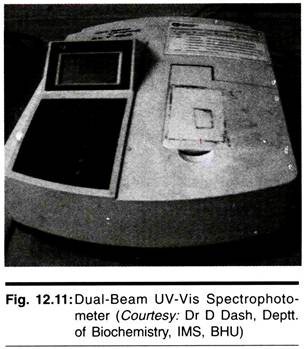ADVERTISEMENTS:
In this article we will discuss about:- 1. Historical Review of Nicotinic Acid 2. Chemistry of Nicotinic Acid 3. Properties and Distribution 4. Modes of Action 5. Functions 6. Deficiency 7. Daily Requirement.
Historical Review of Nicotinic Acid:
(Niacin) and Nicotinamide (Nicotinic Acid Amide, Niacinamide) (Pellagra-Preventing Factor, P-P Factor of Goldberger)
Pellagra was first described by Casal of Spain in 1735. Dr Goldberger and his associates studied it between the years 1874 and 1929 and showed that food rich in vitamin B cured pellagra. In 1926 Smith and Hendrick identified that vitamin B contains heat labile and heat-stable factors. The latter one cured pellagra. Dr. Goldberger named it as P-P factor.
Chemistry of Nicotinic Acid:
Nicotinic acid or niacin is known now as pyridine-3- carboxylic acid. It occurs in tissues principally as amide of nicotinic acid. In the body nicotinic acid is converted into the amide before it becomes active. In tissues, nicotinamide is present largely as a dinucleotide. Two well-defined coenzymes contain nicotinamide which acts with a large group of hydrogen-transport enzymes.
These two compounds are:
i. Diphosphopyridine nucleotide (DPN) or coenzyme 1 (Co I) or nicotinamide adenine dinucleotide (NAD).
ii. Triphosphopyridine nucleotide (TPN) or coenzyme II (Co II) or nicotinamide adenine dinucleotide phosphate (NADP).
ADVERTISEMENTS:
These coenzymes are soluble in water, stable in acid but not in alkali.
Properties and Distribution of Nicotinic Acid:
Nicotinic acid is a white crystalline substance and is moderately soluble in water but quite soluble in alkali (salt formation), alcohol and glyceride. It is heat-stable and not lost during cooking or canning.
Distribution:
i. Vegetable Sources:
The husks of the cereals, green vegetables, peas, beans, tomatoes, etc., are rich in this vitamin. Whole wheat meal contains fair amount (maize or white flour negligible amount).
ii. Animal Sources:
Meat, fish, liver, milk, yeast, etc., contain fair amount. It has also been produced synthetically. Body can synthesise this vitamin from tryptophan.
Modes of Action of Nicotinic Acid:
In the living tissue it remains as a part of at least two enzyme systems:
(1) NAD or DPN or Co I, (2) NADP or TPN or Co II. Niacinamide in combination with two molecules each of ribose and phosphoric acid and one molecule of adenine forms NAD. The reduced form of NAD and NADP are NADH and NADPH respectively (Fig. 11.6). This set of coenzymes takes part in various oxidation-reduction reactions in the body.
Functions of Nicotinic Acid:
i. Essential for growth.
ii. Takes essential part in metabolism and tissue oxidation.
iii. Helps in the formation of fats from carbohydrates. Niacin may reduce the plasma lipid concentration in certain cases of hyperlipaemia, the mechanism being not known.
iv. Prevents pellagra.
ADVERTISEMENTS:
v. It has a stimulating effect on central nervous system.
vi. In therapeutic doses, niacin produces the pronounced transient vasodilation with flushing of the face. This is accompanied by an increase in peripheral blood flow and skin temperature.
Excretion:
2—8 mgm of this vitamin is excreted daily through the urine in adults, fed with average mixed diet as a methylated derivative—N’-methylnicotinamide—at the expense of labile methyl groups of the body.
Deficiency of Nicotinic Acid:
i. In Man:
Pellagra:
The cardinal symptom of this condition is generally known as the three D’s i.e., dermatitis, diarrhoea, and dementia. Deficiency results characteristic dermatitis, specially on the exposed parts of the body. The dermatitis begins with erythema resembling sunburnt areas.
Gradually these areas become reddish-brown, rough, scaly and keratotic (Fig. 11.7). Gastrointestinal disorders, polyneuritis and various forms of mental disorders are observed. Cerebral manifestations include headache, irritability, confusion, etc. General effects are inadequate growth for children, loss of weight and strength and anaemia.
ADVERTISEMENTS:
ii. In Dogs:
Black tongue.
Daily Requirement of Nicotinic Acid:
12-18 mgm for adult males and a little less in adult females. Requirement varies with the protein content of diet as amino acid tryptophan gives rise to niacin in the body. The requirement for niacin increases in increased caloric intake or expenditure, in acute illness, after severe infection, injury, etc.




